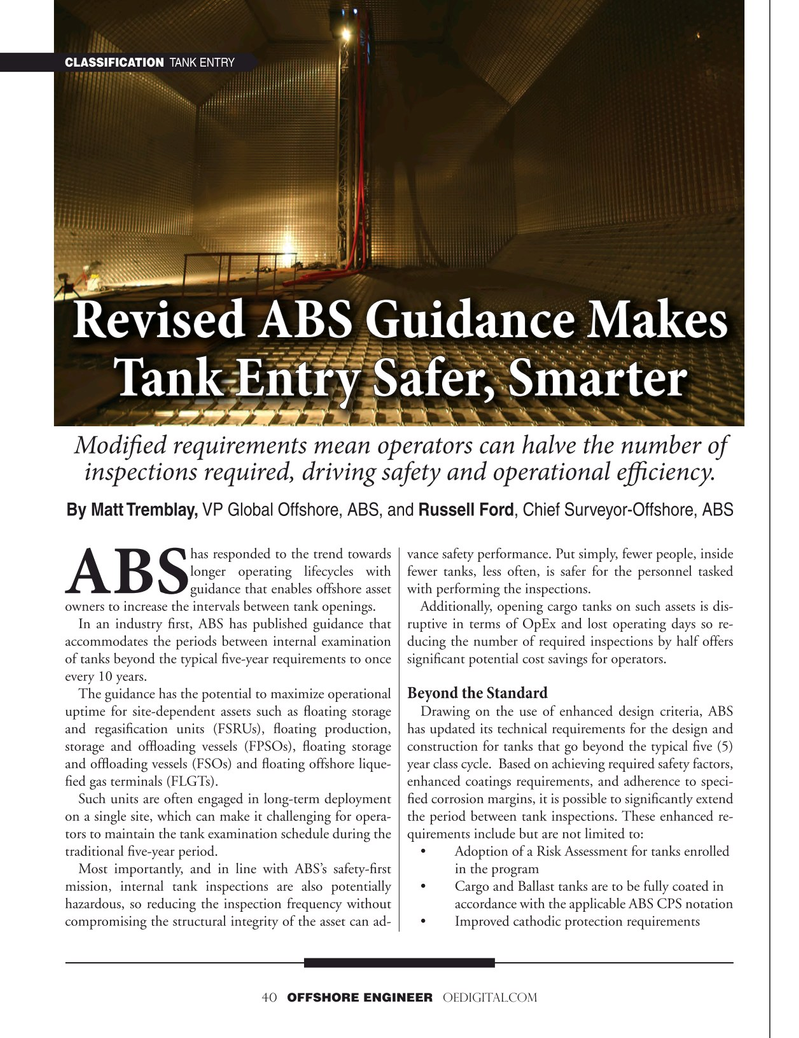
Page 40: of Offshore Engineer Magazine (Sep/Oct 2025)
Read this page in Pdf, Flash or Html5 edition of Sep/Oct 2025 Offshore Engineer Magazine
CLASSIFICATION TANK ENTRY
Revised ABS Guidance Makes
Tank Entry Safer, Smarter
Modifed requirements mean operators can halve the number of inspections required, driving safety and operational efciency.
By Matt Tremblay, VP Global Offshore, ABS, and Russell Ford, Chief Surveyor-Offshore, ABS has responded to the trend towards vance safety performance. Put simply, fewer people, inside longer operating lifecycles with fewer tanks, less often, is safer for the personnel tasked
ABS guidance that enables offshore asset with performing the inspections.
owners to increase the intervals between tank openings. Additionally, opening cargo tanks on such assets is dis-
In an industry frst, ABS has published guidance that ruptive in terms of OpEx and lost operating days so re- accommodates the periods between internal examination ducing the number of required inspections by half offers of tanks beyond the typical fve-year requirements to once signifcant potential cost savings for operators.
every 10 years.
The guidance has the potential to maximize operational
Beyond the Standard uptime for site-dependent assets such as foating storage Drawing on the use of enhanced design criteria, ABS and regasifcation units (FSRUs), foating production, has updated its technical requirements for the design and storage and offoading vessels (FPSOs), foating storage construction for tanks that go beyond the typical fve (5) and offoading vessels (FSOs) and foating offshore lique- year class cycle. Based on achieving required safety factors, fed gas terminals (FLGTs). enhanced coatings requirements, and adherence to speci-
Such units are often engaged in long-term deployment fed corrosion margins, it is possible to signifcantly extend on a single site, which can make it challenging for opera- the period between tank inspections. These enhanced re- tors to maintain the tank examination schedule during the quirements include but are not limited to: traditional fve-year period. • Adoption of a Risk Assessment for tanks enrolled
Most importantly, and in line with ABS’s safety-frst in the program mission, internal tank inspections are also potentially • Cargo and Ballast tanks are to be fully coated in hazardous, so reducing the inspection frequency without accordance with the applicable ABS CPS notation compromising the structural integrity of the asset can ad- • Improved cathodic protection requirements 40 OFFSHORE ENGINEER OEDIGITAL.COM

 39
39

 41
41